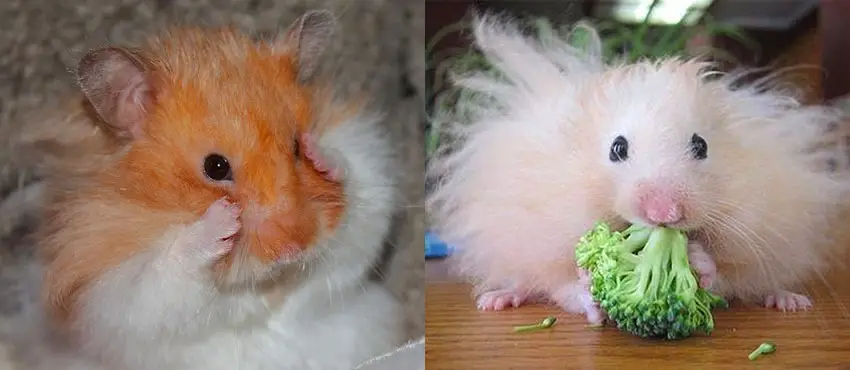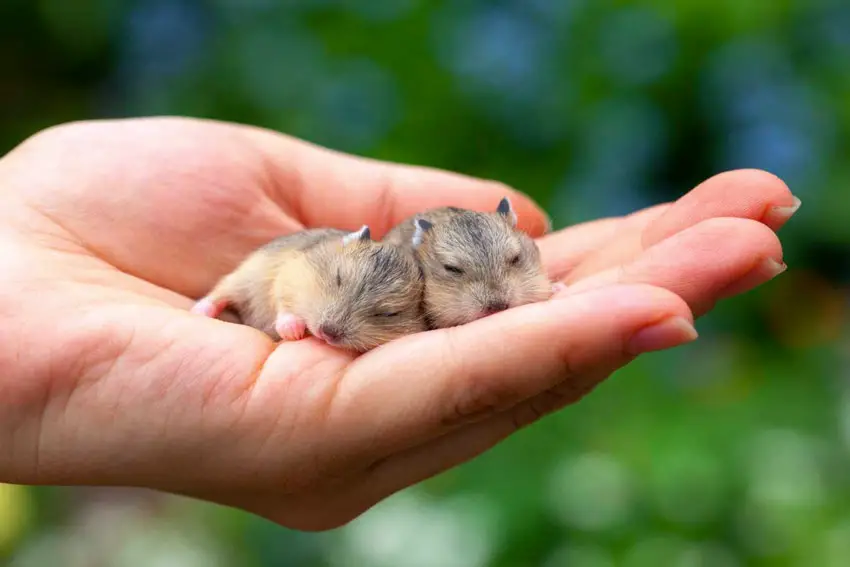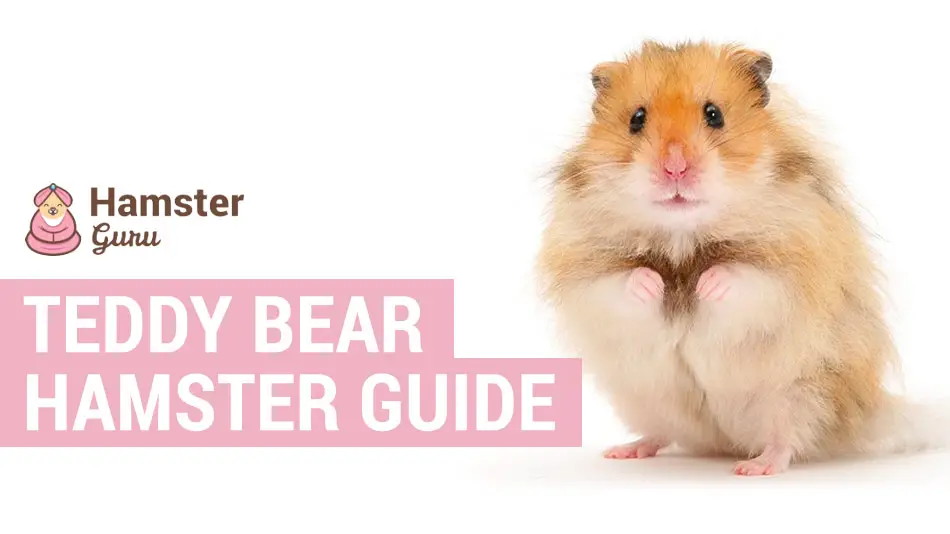Getting our Syrian hamster Oscar was not a decision we took lightly. Despite the constant badgering from our children, we spent a long time researching whether a teddy bear hamster would be the right fit for our family. I am pleased to say that Oscar has over-delivered on his hamster potential and we couldn’t imagine life with him.
If you are thinking about getting a teddy bear hamster but want some top tips and further information on these cute and cuddly fur balls, then why not read our informative guide on everything you need to know about teddy bear hamsters?
Although hamsters are relatively low maintenance, you should always do your research before bringing any new animal into your home. If you are thinking of getting a teddy bear hamster for your next pet, then there are number of things you should know.
Below we have come up with a list of 15 most commonly asked questions and facts, which we hope will inform and delight you.
What is a teddy bear hamster?
Although in books you are much more likely to come across cute mice or nasty rats, hamsters are by far one of the most popular children’s pets – with the teddy bear hamster topping the must have wish list.
Otherwise known as a Syrian, golden or fancy bear, teddy bear hamsters are incredibly cute and cuddly, which probably accounts for their popularity as a breed.
Originating from Syria they were first placed in captivity in the 1930s and quickly adapted to pet life thanks to their super sweet nature.

What do they look like?
Teddy bear hamsters can grow to around 4-7 inches in length and are one of the largest breeds, coming in at almost double the size of a dwarf hamster.
Teddy bear hamsters come in a host of colors, patterns and with different coat types. They have a stocky, barrel shaped body with little stubby tails that are almost completely hidden beneath their long fur.
They have tulip-shaped, paper thin ears and dark, round glassy eyes, symmetrically set on each side of their face. Their small pink noses constantly twitch whilst their short stumpy legs allow them to be fast and agile when needed.
How to take care of a teddy bear hamster
Teddy bear hamsters are a great choice of pet for small children, as they are low maintenance to look after, great fun to play with and easy to train.
Unlike dogs and cats which require constant attention, hamsters tend to sleep during the day, venturing out mainly at night. Although they are often referred to as nocturnal, most teddy bear hamsters are crepuscular, which means they are more likely to be active at dawn or dusk – which fits in perfectly with the school day.
You will, however, need to put in extra effort and care when you first bring home your teddy bear hamster as you will need to tame it and train it not to bite. Once your hamster is used to being handled, then as long as they receive some regular exercise outside of their cage, they will live a happy and healthy life.
In the long-term hamsters need very little, relying on us daily for the basics of food, water and shelter. It is important, however, that we clean their cage regularly and provide them with plenty of chews and toys to stimulate them mentally and physically.
Obviously, we want to care for our hamsters as best we can, so providing them with a large space to burrow and play and spending time cuddling them allows you to better understand their behaviors.
What can they eat?
Domestic teddy bear hamsters are omnivores by nature, which means they enjoy a diverse range of foods including plants, insects and vegetables.
Pre-packaged muesli or pellets bought from your local pet store offer a great source of nutrients and minerals for your hamster, however small quantities of fresh fruit, vegetables and herbs offer a great way to supplement their diet.
The best types of food you can give your hamster are those similar to what they would eat in the wild. Try to avoid giving them too much fresh fruit, as these are often high in natural sugar content. The same applies for hamster snacks, especially the pre bought varieties, which although are great for keeping teeth in check, are often laden with honey, syrups and extra sugars.
How long can they go without water?
Although hamsters do not drink large quantities of water (unless of course they are suffering from a health disorder), your teddy bear hamster will require around 2-4 teaspoons of water a day in order to stay hydrated. Just because your hamster doesn’t drink that much does not mean they are not interested in water and that it should be substituted for something else.
A teddy bear hamster that does not have access to a regular water supply, is unlikely to survive for longer than a week. This is why you should never go away and leave your hamster unattended for prolonged periods of time and make sure that their water bottle is always replaced with clean, fresh water.

Are teddy bear hamsters friendly?
Teddy bear hamsters have the most wonderful personalities and temperament. Providing you get your hamster used to being handled from a very young age, it will love being held by you.
Fancy bear hamsters are friendly, curious and courageous, and enjoy wandering around, burrowing, and exploring their surroundings! But a hamster’s friendliness also depends on their gender, how tame they are, and whether or not they’re being kept on their own.
Syrian hamsters tend to form a strong bond with their owners, mainly because they are solitary pets and rely on us for entertainment. But remember, although they are generally happy when being handled carefully, they can become skittish when startled or scared.
Do teddy bear hamsters bite?
Like any animal, teddy bear hamsters can be unpredictable and should always be handled with care. Even the tamest hamster could be provoked into biting if they become anxious, stressed or are struggling whilst in your hands.
Hamsters are also renowned for having terrible eyesight so rely on their other extraordinary senses to guide them and keep them safe. This is why it is so important to approach them slowly so as not to scare them and always make sure that you wash your hands so that they do not mistake your fingers for some form of tasty food source.
Just like us humans, hamsters do not like to be roused from their sleep. Therefore, you should resist the urge to prod them awake as they may not take too kindly to it and may react by biting.
If your hamster does bite you, it does not necessarily mean that it is aggressive by nature, as it is possible to learn how to train your hamster not to bite. There are several things that you can do to prevent and dissuade this behavior. When handling your hamster, remember to wash your hands, wear gloves and offer treats for good behavior – all of which will help prevent painful bites.
What is the difference between a Syrian hamster and a teddy bear hamster?
A Syrian hamster with long hair is often referred to as a teddy bear hamster, due to its cute and fluffy appearance whilst a short haired Syrian hamster is known as a fancy hamster, although the names are interchangeable.
Although they are the same species, they have been given these elaborate names by hamster breeders in order to match the hamster’s coloration and patterns. In fact, black bear hamsters also exist, and are another name for Syrian hamsters with black fur.
So, although you may think that a teddy bear hamster is a breed in its own right, these furry friends are in fact Syrian hamsters in disguise.
How do you tame a teddy bear hamster?
In order to tame your pet hamster, you should use the same technique as you would for all hamsters. The only difference with teddy bear hamsters is that they are often easier to handle. This is mainly due to their size as they are more robust than dwarf hamsters, especially if you buy your pet very young.
Most hamsters can be tamed quickly with regular, gentle handling, but in order to build up complete trust, there are certain steps you should follow. This will minimise stress and anxiety and decrease the risk of fingers being bitten.
Persistence (and a fair amount of bribery) will pay off and within a matter of weeks (if not months), your anxious, furry ninja will end up being one cuddly, happy teddy bear hamster.
Below we explain how to tame your teddy bear hamster.
- It is important not to rush into the taming process. It is of course tempting to want to hold your hamster immediately after purchasing them, but they are likely to be scared and confused at first, so you should wait a few days to let them relax and adapt to their new surroundings.
- After a few days, once your pet hamster has increased in confidence, you can start to interact by feeding them treats through the bars of their cage. Once they are content to take them from your fingers, you should slowly start placing your hands inside their cage to offer them off the palms of your hand.
- Once your hamster feels happy enough to come towards you on their own accord, try to coerce them into a container so that you can take them someone safe and enclosed to hold them.
- Holding them for the very first time may feel a little daunting. As animals can sense anxiety and may feel scared themselves, we recommend taking them to a secure play area such as a playpen or bath. You can always wear gloves if you are worried that they may nip but try to encourage your hamster to run on to and around your hands, moving them in a forward motion. Just remember, however, that hamster are incredibly nimble and can move at quite a speed when they want too.
- Once your hamster is happy to be held, you need to master the art of picking them up. It is important to never lunge or grab at them, as this is how predators attack their prey in the wild. Instead scoop them gently into your hands using a cupping motion whilst remembering to support their weight in the process.
Each teddy bear hamster is likely to be different, so there is no specific length of time that the taming process will take. Our advice is to simply be patient and work on building up a good bond.
How to tell if a teddy bear hamster is pregnant
If you have a female teddy bear hamster, then you may have noticed a funny smell emanating from their cage every few days? This is because they are having their estrus cycle, in which they release a thin, whitish discharge and a scent that attracts male hamsters when it is time to mate.
Although most hamsters are rehomed before they hit sexual maturity, female hamsters are able to get pregnant from as early as 6-8 weeks old. If your hamster has spent time with a male hamster in the same cage, then there is a chance that the two will have mated. Rather than just guessing, here are some key symptoms to tell if your fancy bear hamster is pregnant.
If you observe your hamster regularly you may notice that her secretions start to change, becoming thicker and more consistent, unlike the thin one during her regular cycle. It will also persist for longer than normal if a successful pregnancy is underway.
Teddy bear hamsters have the shortest gestation period of all the breeds, at around 16 days, and from the 10 day mark you will start to notice her belly swelling. Her temperament may also change, she’ll start to make a nest for her young and she may make it clear that she no longer wants to be handled.
For top tips on how to provide the best after care for your pregnant hamster and her hamster pups, read our informative blog on hamster pregnancy, cycles and birth.
How long is a teddy bear hamster pregnant for?
Most teddy bear hamsters are pregnant for around 16 days, which is short in comparison to a Roborovski, whose gestation period on average is 22-30 days.
It is important during their pregnancy that that you start to provide your hamster with some additional care. This involves making sure that they are fed plenty of food that is rich in protein and that their water is constantly topped up. You should also ensure that there is plenty of bedding material at their disposal, as she will need it for making a nest for her and her young.
Make sure that you remove any hamster wheels and other toys from the cage to prevent your hamster using up all of their energy beforehand.

How many babies can they have?
A normal litter for a teddy bear hamster will contain between 6 to 8 pups. These pups are born without any fur and with their eyes and ears closed, although they will have both their front incisor teeth.
Although your hamster will be fully capable of giving birth herself, you will need to be patient as it can take anything between 10 to 30 minutes between pups.
Once the hamster pups arrive you shouldn’t need to look after them as this is the job of mum. Just bear in mind, however, that for the first few days she will require complete peace and quiet and may act more aggressively towards you if you enter her space.
In order to reduce any stressful situations, you should place a blanket over the cage, minimize interaction for at least two weeks and only spot clean where necessary. Try not to disturb the nest and when providing food and water, do so as quietly as possible.
Hamster pups rely on their mums until they are weaned at 3 weeks of age although you can start to introduce softened food that is moistened with water from around 10 days old.
How to tell the sex of a teddy bear hamster
Sexing your teddy bear hamster can be difficult, especially if they are young or have yet to be tamed. But there are key differences between male and female genitalia that are easy to detect and will allow you to determine the sex of your hamster.
A teddy bear hamster’s testicles are often very prominent, so try and observe them whilst they are asleep on their backs or grooming themselves in this area. A female hamster will have 6 pairs of nipples although they may be difficult to spot on a teddy bear hamster due to the length of their hair.
If your hamster is tame, then another way to check is to look at its genitalia and the anogenital distance. A hamster will have two openings (their sexual organ and their anus). For females the gap between the two is hardly noticeable and the area around them will be bald. For males, however, there is a much larger gap and there is likely to be hair.
Other differences between the sexes include:
- Male hamsters, in general, are larger in appearance than their female counterparts.
- A female’s behind tends to be more rounded than a male hamster, which in comparison looks elongated.
- A male hamster has more prominent scent glands which are situated on either side of their flanks or in male dwarf hamsters they are situated near the middle of the belly.
- If in any doubt, then you should take your hamster to a vet who can determine the sex for you.
How long do they live for?
The smaller the hamster, the shorter its life span. As Syrian hamsters are the largest breed, the average lifespan for a teddy bear is two to three years. Depending on care and health however, it is possible for teddy bear hamsters to live as long as five years although this is unusual. According to the Guinness Book of World Records, the oldest hamster lived to be 7 years of age.
In the wild Syrian hamster numbers are declining due to a loss of habitat and the effects of climate change. It is therefore important that we preserve the lives of our pet hamsters for as long as possible.

How much do they cost?
Buying a teddy bear hamster doesn’t have to be expensive – in fact you can give a hamster a home for free if you choose to adopt. If, however, you would prefer to purchase your teddy bear hamster via a breeder or pet store than you can expect to pay up to $20.
Although your teddy bear hamster does not cost a lot of money itself, the paraphernalia, food and bedding to care for them can soon add up. Therefore, you should make sure you have sufficient funds to purchase the essentials. Below is a list of teddy bear hamster equipment to help you budget.
Cage
As teddy bear hamsters can grow to around 5-7 inches, you need to have a cage large enough for it to live and scamper around in. Hamster cages range from $20-$100 although if you have the time and D.I.Y know-how, check out our step by step guide on how to make a hamster bin cage.
Bedding
Hamsters are burrowers by nature, so you need to ensure that you have enough hamster bedding for them to hide. A typical teddy bear hamster will need a layer of around 6inches and paper-based bedding is best. Costs range from $12-$40.
Food dish
Although your Syrian hamster may store food in its cheeks, a simple food dish is not expensive, generally costing around $5.
Water bottle
Whether you choose plastic or glass, these should be filled up daily and are inexpensive, costing around $6-$12.
Hideout
All hamsters like to retreat to a safe place and depending on the type of material hamster hideouts are made from they can priced anywhere between $5-$12.
Chew toys
In order to keep your hamsters’ teeth in tip top condition it is important that you purchase toys for them to grind their teeth on. They generally cost around $2.
Toys
Teddy bear hamsters need brain stimulation and are incredibly active (especially at night). Therefore tunnels, tubes and bridges are great for them to run around in and on. These cost around $5-$10 depending on the type of material they are made from. Again, if you are looking to save money, then you could get your kids to make their own versions using toilet roll holders and empty boxes.
Wheel
Hamsters need to burn off energy and just love running around in a wheel. The cost of a wheel will vary depending on the size required. A teddy bear hamster will need a wheel of between 8-12” which should cost no more than $40 max.
Food
Pre-made pellet and seed mix from a pet store gives plenty of variety and is very nutritious. These bags cost around $18.
Carrier
Although a hamster carrier may not be essential straight away, it is good to have something that you can carry your hamster in if you ever need to take it out of the house – for example to the vets. A basic hamster carrier costs around $10-$12 (although you can make your own versions with boxes you already have around the house).
Finally, please make sure that you keep back some money, just in case your hamster falls ill. It’s amazing what a quick trip to the vets can cost as we discovered when our hamster became sick.
Conclusion
Of course, we are bias, but we think teddy bear hamsters are undeniably cute and make the best first time pets. And, now you know all about them in terms of their history, biology, behavior, and personality, we are sure that you’ll agree too.
If you still have outstanding questions or require further information on caring for your hamster, please refer to the blogs on our website.

